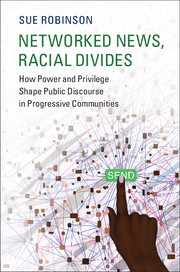 Networked News, Racial Divides
Networked News, Racial Divides References
Published online by Cambridge University Press: 20 November 2017
- Type
- Chapter
- Information
- Networked News, Racial DividesHow Power and Privilege Shape Public Discourse in Progressive Communities, pp. 238 - 253Publisher: Cambridge University PressPrint publication year: 2017


